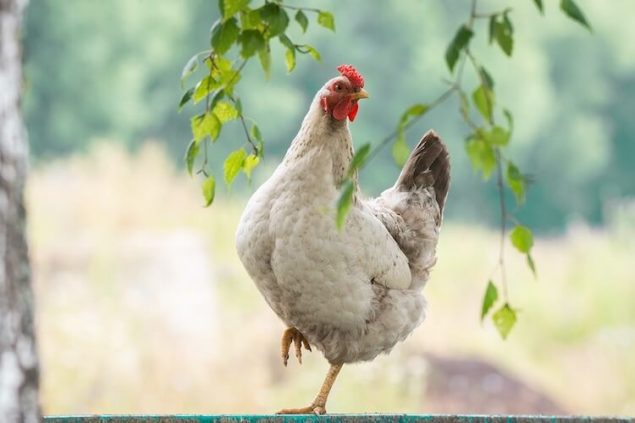Bumblefoot, also known as pododermatitis, has become a prevalent ailment in companion and aviary birds. Any inflammatory or degenerative disorder of the avian foot is referred to as pododermatitis. Pododermatitis can affect any species of birds, but it is especially severe in birds of prey, chickens, turkeys, ducks, geese, swans, waders, and seabirds, as well as canaries, finches, budgerigars, and cockatiels that are kept permanently or temporarily in the cage.
Bumblefoot is an infection that affects the bird’s feet from the bottom. When a bird stands on hard surfaces for too long or has an injury on its foot, an infection develops. The bird is usually overweight. The tissue will deteriorate and peel off as a result of the pressure.
A specific injury, such as a skin puncture of the undersurface of the foot by a talon, thorn, or another foreign object, is often the cause of infection named pododermatitis. Thus, all these factors result in the development of painful sores or cracks.
Bumblefoot in Birds Symptoms
The following are some of the symptoms of the Bumblefoot:
- By favoring one leg or limping.
- A swollen or inflamed foot or footpad.
- Reduced activity.
- Swollen Toe.
- Not using a single leg.
The common symptoms of bumblefoot include puss-filled sores, swelling, and brown or black scabs. It most commonly affects the footpad, although it can also affect the toes or the top of the foot.
Bumblefoot in Birds Causes
Bumblefoot can be caused by a variety of factors, including:
- Floors or cages that are hard, uneven, or harsh.
- Perches that are incorrectly constructed or coated in the wrong material.
- Bedding that is damp and filthy.
- Overweight.
- Overgrown toenails.
- Deficiency in vitamin A.
- A cage that has accumulated feces and has not been adequately cleaned.
- Abnormality of the leg or conformation.
- Fighting among the birds inside the cage.
- Previously injured foot or leg.
- Unhealthy eating habits.
- Lack of movement.
Bumblefoot in Birds Prevention
There are numerous ways to help prevent the bird from developing bumblefoot. The following preventative measures can be taken to help prevent bumblefoot in birds:
- By keeping the cage clean and keep a check on the birds if they have developed any kind of infection on their foot.
- Keep the place or perch of the correct size. The floor of the cage should be cleaned properly.
- By making sure that a bird is completely fine. Keep a look at the feet of the birds every time they are taken out of the cage.
- Take the bird to the veterinary if it has any health issues. The early diagnosis will help in treating the disease effectively.
- Keep a look at the weight of the bird. Do not make the bird overeat. This will create problems for the birds in the future. They might develop sores due to being overweight.
- By giving the birds healthy nutrition. This will make the birds active and happy and eventually they will be protected from certain diseases.
- Keeping the harmful objects away from the bird’s cage. If anything is found then immediate action should be taken to save the birds from getting infected.
- By trimming the nails of the birds often. This will help them in holding the perch without any trouble.
- Stopping the birds from fighting with each other. Keep the birds who do not like each away from each other.
Bumblefoot is frequently preventable. By following these simple measures, we can prevent the bird from acquiring bumblefoot or, at the very least, detect an issue early enough to begin treatment.
Bumblefoot in Birds Treatment
Treatment will be guided by the severity, type, and path of infection. Bumblefoot and other foot diseases of the birds can be treated in the same manner. If the bird’s feet are badly injured, the vet may wish to wrap them in bandages to aid healing and prevent bacteria from entering the wounds.
The following are some of the treatments for the mild bumblefoot disease:
- Cleaning the wound will help in minimizing the severity of the disease.
- The wound should be dried properly to avoid puss development.
- The puss should be squeezed out effectively.
- Dressing the wound is necessary to avoid any further infection from developing.
- Vetericyn should be sprayed regularly.
- Use of antibiotics.
The infected tissue from the bird’s foot may need to be removed in more severe cases of bumblefoot. This step is important because this infected tissue may become fatal for the birds and they can die in this case.



